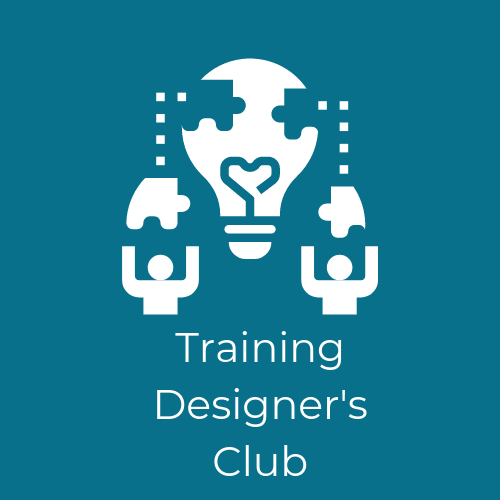Creativity has always been important in learning design – but we are looking at it with fresh eyes in our new virtual world. But what do we mean by creativity and why does it matter?
Well, creative doesn’t mean ‘wacky’. Creativity can be quite serious! Creative training is defined in relation to the topic and the audience. Yes, sometimes creative training may involve crossing streams and building rope bridges: It may involve Lego, singing, or some whizzy app; It may simply involve a live demo, detailed case study or expert interview.
Creativity in training is often just about providing an alternative way in to the learning – a different way of exploring it from the norm. It’s about providing multiple touch points and appealing to different learning preferences. It’s about getting people off autopilot and grabbing their attention, taking them out of their comfort zone, but only by a little (or the training becomes stressful, and no-one learns when they are stressed!). Using picture cards is creative for a bunch of accountants – retail managers are likely to be up for dressing up and singing songs. In the online space, it may involve a challenge away from the screen or a quick-fire exercise. Creativity is relative.
It’s also topic specific: If you’re dealing with technical matters (IT, legal) or sensitive issues (Safegaurding, mental health) making a collage may not be appropriate. But following a fictional case study from beginning to end and really bringing it to life is creative – it engages emotion and helps the training to be placed on hooks that will make it stick.
Secondly, we need to ask if the need for creativity in learning being driven by US or the learners, or the business?
Generally, it isn’t the business that calls for creative solutions. In fact, the business is often quite sceptical of creativity: they want results, and a clear linear path feels like this is what will deliver those results. But as L&D professionals, we beg to differ. We know that we have to engage learners, pique their curiosity, make learning memorable and appeal to different preferences if we are going to get the results the business wants. So we are the key drivers of creativity in training because we know that it leads to better learning, and better results.
Learners themselves are also driving the need for creative learning – they have many demands on their time, they don’t want to waste it in a boring session or clicking through mindless e-learning. We live in the Netflix age and we have to compete for learners’ attention. Offering creative solutions helps that.
My view is that the business has the right to tell me WHAT needs to be covered/learned. As a learning professional, I should be the one driving HOW we achieve that. In the same way as we would tell a builder what we want our extension to look like and be used for, but we wouldn’t dream of telling them how to go about constructing it.
Finally, what can we do to be creative in learning design?
The first thing we agreed was mixing it up is important: taking a blended approach when we can, breaking learning down, engaging visual, auditory and kinaesthetic senses as well as allowing time for reflection.
We need to appreciate how people learn, and the fact that it isn’t linear or uniform, so training doesn’t have to be either – though some sort of structure is helpful. I use MASTER to help keep my training sessions on track. We need to understand that although learning styles are under question, we do actually have preferences – things that we respond more or less favourably to, and these are different for different people.
We need to adaptable as facilitators and have a number of tools available to us to change energy levels or pace, make things more interactive or more reflective. Responding to group and individual needs in the moment is one big advantage that live training has over elearning. As designers, we should aim to provide alternative ways to cover different sections either by designing more than one activity for a workshop, or by providing a choice of resources in curated learning (watch a video, read an article, listen to a podcast) – as long as they all cover broadly the same content.
We need to learn from each other: There are MANY right ways to design training, but we tend to stick with what we know and what we like. Working with other designers (as we do in the VIP membership) can add to the richness of our toolkit. Attending learning that is different to that that we would normally choose can also open our eyes to new ways of working.
We need to be brave and try new things – BUT we also need to get permission for that from learners (it’s for them afterall, not us!), be prepared to admit defeat and have a ‘plan B’ if we need to abandon it.
Finally, we must remember that creativity should never drive our learning design – it is the means by which we enable people to learn, so start with WHY people are there and WHAT they need to learn, and then think about all the different ways that they might do that: That’s how we add creativity to our training design.
